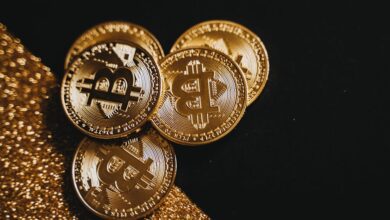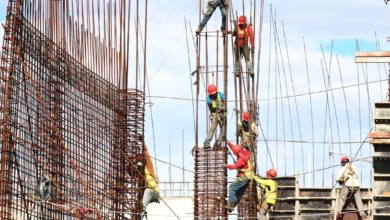Metals in Motion: Analyzing Industrial Demand and Investment Dynamics in a Changing Economy

In an increasingly interconnected and dynamic global economy, the role of metals—both precious and industrial—has become more prominent than ever. As industries pivot towards sustainability and investors seek to navigate market volatility, understanding the multifaceted nature of metals is crucial. This article delves into the intricate landscape of metal markets, highlighting silver's dual influence as both an industrial commodity and a sought-after investment. We will explore how copper prices serve as vital indicators of global economic health, while the burgeoning green energy sector drives demand for rare earth metals. Additionally, we will compare platinum and palladium as investment options, discuss the importance of metals in diversifying investment portfolios, and examine how inflation affects the pricing of these valuable resources. Finally, we will consider the future of aluminum in a sustainable economy and the impact of mining regulations on metal prices. Join us as we navigate these critical themes to understand the evolving role of metals in today's economy.
- 1. **Silver's Dual Influence: Navigating Industrial Applications and Investment Opportunities**
- 2. **Copper Prices as Economic Barometers: Understanding Global Market Signals**
- 3. **Rare Earth Metals and Green Energy: A Catalyst for Demand in the New Economy**
1. **Silver's Dual Influence: Navigating Industrial Applications and Investment Opportunities**
Silver plays a unique role in both industrial applications and investment markets, making it a versatile commodity with dual influence. On the industrial side, silver is prized for its high conductivity, thermal resistance, and antimicrobial properties. It is extensively used in electronics, solar panels, medical devices, and various chemical processes. The growing demand for renewable energy technologies, particularly solar energy, has significantly boosted silver's industrial consumption. As solar panel production expands, so does the need for silver, which is utilized in photovoltaic cells to enhance energy conversion efficiency.
Simultaneously, silver is viewed as a safe-haven asset in investment markets. Investors often turn to silver during times of economic uncertainty, inflation, or geopolitical tension, seeking to hedge against potential losses in traditional financial instruments. The metal's historical role as a store of value is reinforced by its tangible nature and liquidity in the marketplace. Furthermore, the recent surge in interest for precious metals as part of diversified investment portfolios has led to increased demand for silver, often driven by its lower price point compared to gold.
Navigating these dual roles, silver's market dynamics are influenced by both industrial demand and investment sentiment. Factors such as technological advancements, shifts in global economic conditions, and changes in investor behavior all contribute to price fluctuations. As industries continue to innovate and seek sustainable solutions, the interplay between silver's industrial applications and its investment allure will likely shape its market trajectory in the years to come.
2. **Copper Prices as Economic Barometers: Understanding Global Market Signals**
Copper prices have long been viewed as a reliable indicator of global economic health, often referred to as "Dr. Copper" due to its ability to diagnose economic trends. This reputation stems from copper's extensive use in various industries, including construction, electronics, and manufacturing. When economic activity is robust, demand for copper typically rises, leading to increased prices. Conversely, during economic downturns, demand wanes, resulting in lower prices.
The correlation between copper prices and economic performance can be attributed to several factors. For instance, in periods of economic expansion, infrastructure projects and construction activities surge, driving up the demand for copper wiring, plumbing, and roofing materials. Additionally, the growth of emerging markets, particularly in Asia, further accentuates this demand as these countries invest heavily in infrastructure to support their development.
Market analysts closely monitor copper price fluctuations as they can signal broader economic trends. A steady increase in prices may suggest rising industrial activity and consumer confidence, while sharp declines could indicate a slowdown or recession. Moreover, geopolitical factors, supply chain disruptions, and changes in mining output also play significant roles in influencing copper prices, making them a composite reflection of both local and global economic conditions.
Investors and policymakers alike utilize copper price trends to gauge economic sentiment. For example, a spike in prices might prompt investors to anticipate inflationary pressures or increased production costs, while a drop could lead to concerns about a cooling economy. As such, copper prices serve not only as a commodity indicator but also as a crucial economic barometer that reflects the interconnectedness of global markets.
3. **Rare Earth Metals and Green Energy: A Catalyst for Demand in the New Economy**
Rare earth metals are emerging as critical components in the transition to green energy technologies, significantly increasing their demand in the modern economy. These metals, which include elements such as neodymium, dysprosium, and lithium, play essential roles in the production of high-performance magnets, batteries, and other components crucial for renewable energy systems and electric vehicles (EVs).
As the world shifts away from fossil fuels, the push for sustainable energy solutions has led to a surge in the production and adoption of technologies like wind turbines, solar panels, and EVs. For instance, neodymium-iron-boron magnets, used in wind turbines and EV motors, require substantial amounts of rare earth metals. This burgeoning market is driving exploration and investment in rare earth mining, as countries seek to secure stable supply chains to meet their energy goals.
Moreover, advancements in green technologies are expected to further elevate the demand for rare earth metals. As innovations in energy storage and efficiency continue to progress, the reliance on these materials will likely grow, creating a robust market driven by both environmental policy and consumer preference for sustainable options. However, this increased demand also raises concerns regarding supply chain vulnerabilities, as rare earth metals are predominantly sourced from a limited number of countries, notably China.
In summary, the intersection of green energy technologies and rare earth metals positions these materials as pivotal to the transition toward a sustainable economy, representing both an opportunity for investment and a challenge in terms of resource management and geopolitical dynamics.
In conclusion, the intricate dynamics of metals in both industrial and investment markets underscore their significance in today’s economy. Silver's unique position as both an industrial commodity and a store of value highlights its versatility, while copper prices serve as vital indicators of global economic health, reflecting trends and shifts in demand. The push for green energy technologies is reshaping the landscape for rare earth metals, driving demand and innovation in sustainable solutions.
As we compare platinum and palladium, investors must weigh their respective advantages, considering factors such as market volatility and industrial applications. Furthermore, incorporating metals into investment portfolios can provide diversification and a hedge against inflation, which significantly impacts the prices of both precious and industrial metals. Looking ahead, aluminum's role in a sustainable economy appears promising, although it will be shaped by evolving mining regulations that can influence market prices.
Together, these factors paint a complex picture of the metal markets, where strategic investment and an understanding of global trends can lead to informed decision-making. As we navigate these developments, staying abreast of market signals and technological advancements will be essential for both investors and industries alike.





